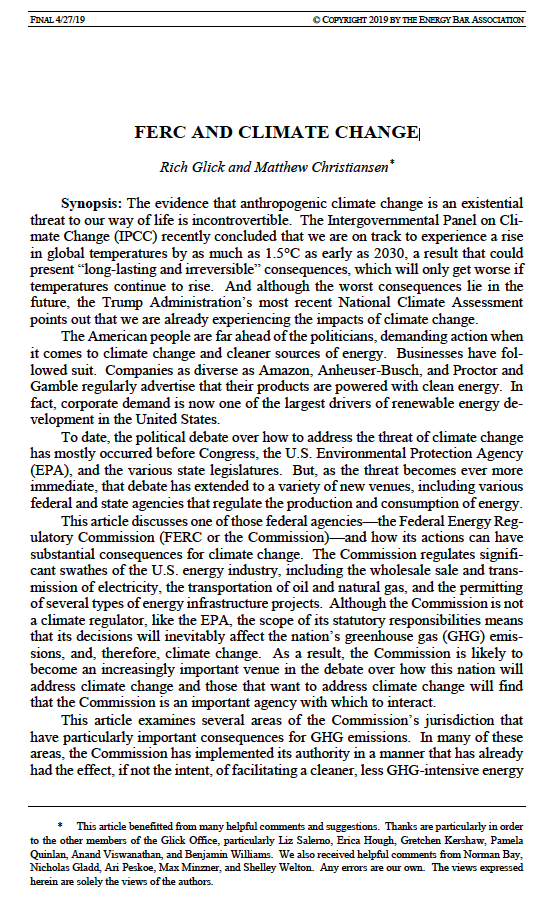Synopsis
The evidence that anthropogenic climate change is an existential threat to our way of life is incontrovertible. The Intergovernmental Panel on Cli-mate Change (IPCC) recently concluded that we are on track to experience a rise in global temperatures by as much as 1.5°C as early as 2030, a result that could present “long-lasting and irreversible” consequences, which will only get worse if temperatures continue to rise. And although the worst consequences lie in the future, the Trump Administration’s most recent National Climate Assessment points out that we are already experiencing the impacts of climate change.
The American people are far ahead of the politicians, demanding action when it comes to climate change and cleaner sources of energy. Businesses have fol-lowed suit. Companies as diverse as Amazon, Anheuser-Busch, and Proctor and Gamble regularly advertise that their products are powered with clean energy. In fact, corporate demand is now one of the largest drivers of renewable energy development in the United States.
To date, the political debate over how to address the threat of climate change has mostly occurred before Congress, the U.S. Environmental Protection Agency (EPA), and the various state legislatures. But, as the threat becomes ever more immediate, that debate has extended to a variety of new venues, including various federal and state agencies that regulate the production and consumption of energy.
This article discusses one of those federal agencies—the Federal Energy Regulatory Commission (FERC or the Commission)—and how its actions can have substantial consequences for climate change. The Commission regulates significant swaths of the U.S. energy industry, including the wholesale sale and trans-mission of electricity, the transportation of oil and natural gas, and the permitting of several types of energy infrastructure projects. Although the Commission is not a climate regulator, like the EPA, the scope of its statutory responsibilities means that its decisions will inevitably affect the nation’s greenhouse gas (GHG) emis-sions, and, therefore, climate change. As a result, the Commission is likely to become an increasingly important venue in the debate over how this nation will address climate change and those that want to address climate change will find that the Commission is an important agency with which to interact.
This article examines several areas of the Commission’s jurisdiction that have particularly important consequences for GHG emissions. In many of these areas, the Commission has implemented its authority in a manner that has already had the effect, if not the intent, of facilitating a cleaner, less GHG-intensive energy mix. We argue that the basic principles that the Commission has used to implement this authority continue to support actions that will likely reduce GHG emissions. In other areas, particularly certain types of infrastructure permitting, we argue that the Commission has fallen short of its statutory obligations to consider the impact of its actions on climate change and that more is needed to comply with the Commission’s mandates. On the whole, we conclude that the urgent threat of climate change does not necessitate a wholesale reinterpretation of the Commission’s jurisdiction or a novel regulatory paradigm. Instead, climate change increases the stakes of many Commission actions, making it all the more important that the Commission carry out its existing obligations.
Authors
Rich Glick and Matthew Christiansen


